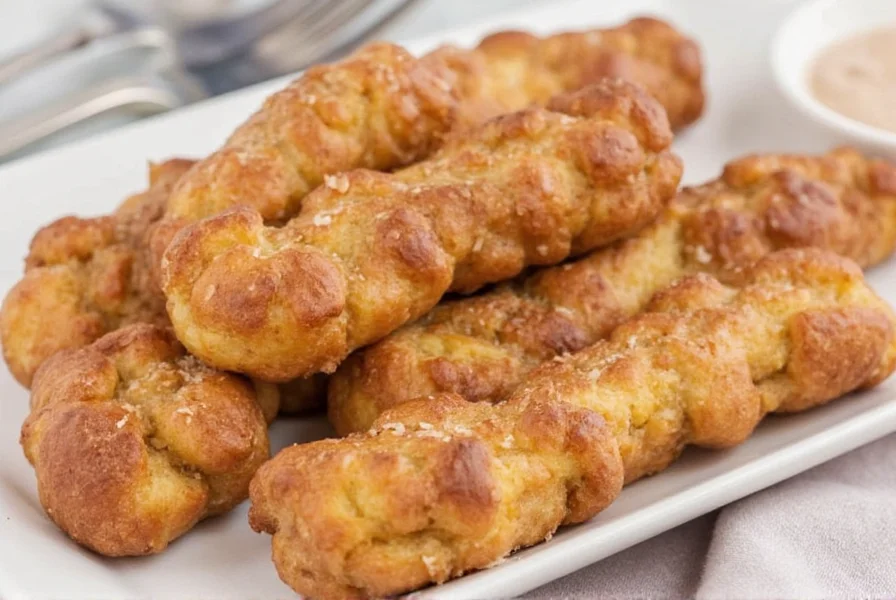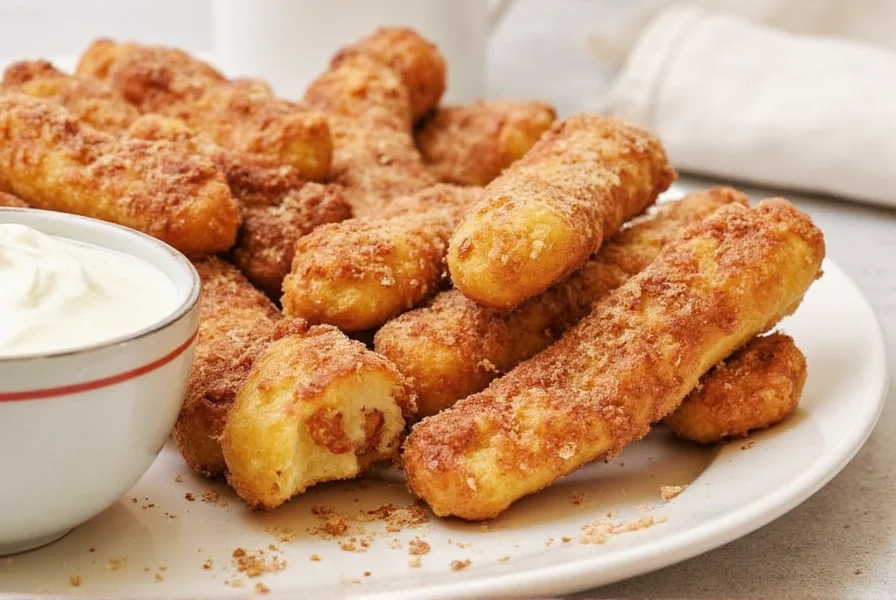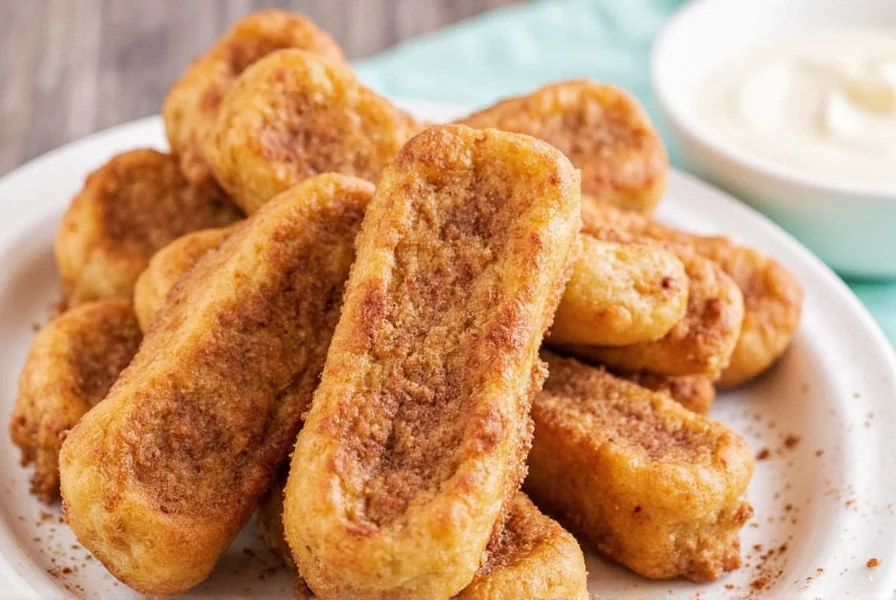If you're looking for an easy way to elevate your weekend breakfast, cinnamon french toast sticks offer the perfect balance of crispy exterior and soft interior with that signature cinnamon warmth. Unlike traditional french toast, these portable sticks are ideal for dipping and sharing, making them especially popular with families and at brunch gatherings.
The Essential Ingredients for Perfect Cinnamon French Toast Sticks
Creating restaurant-quality cinnamon french toast sticks at home requires just a few pantry staples. The magic happens when you combine the right ratio of ingredients in your custard mixture. For a standard batch serving 4 people, you'll need:
| Ingredient | Amount | Why It Matters |
|---|---|---|
| Thick-cut bread | 8 slices | Provides structure that holds up during cooking |
| Large eggs | 3 | Creates the custard base for coating |
| Whole milk | 1 cup | Adds richness and helps with browning |
| Ground cinnamon | 1½ tsp | Provides the signature warm spice flavor |
| Vanilla extract | 1 tsp | Enhances overall flavor complexity |
Step-by-Step Preparation Guide
Follow these professional kitchen techniques to achieve perfectly cooked cinnamon french toast sticks every time:
- Prepare your bread: Use slightly stale bread (about 2 days old) for best results, as it absorbs the custard without becoming soggy. Cut each slice into ¾-inch thick sticks.
- Create the custard mixture: In a shallow dish, whisk together eggs, milk, cinnamon, vanilla, and a pinch of salt. For extra flavor depth, add 1 tablespoon of maple syrup to the mixture.
- Soak properly: Dip each bread stick into the mixture for exactly 20-30 seconds per side. Over-soaking leads to mushy texture while under-soaking results in dry sticks.
- Cook at the right temperature: Heat a non-stick skillet or griddle over medium heat (350°F/175°C). Melt a small amount of butter and cook sticks for 2-3 minutes per side until golden brown.
- Keep warm: Place finished sticks on a wire rack in a 200°F (95°C) oven while preparing the rest to maintain crispness.

Pro Tips for Restaurant-Quality Results
Avoid common mistakes that ruin homemade cinnamon french toast sticks with these expert recommendations:
- Bread selection matters: Brioche or challah provide the ideal richness, but thick-cut sourdough works well for a less sweet option
- Cinnamon timing: Adding cinnamon directly to the custard creates more even flavor distribution than sprinkling after cooking
- Temperature control: If the sticks brown too quickly, your heat is too high - perfect cooking requires patience at medium heat
- Syrup application: Warm your maple syrup slightly before serving for better adhesion to the sticks
Delicious Variations to Try
Once you've mastered the basic cinnamon french toast sticks recipe, experiment with these popular twists:
- Stuffed version: Spread cream cheese or Nutella between two bread slices before cutting into sticks
- Healthy alternative: Use whole grain bread and substitute half the milk with unsweetened almond milk
- Spiced upgrade: Add a pinch of nutmeg or cardamom to the custard for additional warmth
- Savory-sweet option: Sprinkle with flaky sea salt before serving to enhance the sweetness
Serving Suggestions and Pairings
Cinnamon french toast sticks shine when served with complementary accompaniments. Consider these pairings for a complete breakfast experience:
- Classic maple syrup for traditional flavor
- Fresh berries (strawberries, blueberries, or raspberries)
- Whipped cream or Greek yogurt for added protein
- Bacon or sausage for a balanced sweet-savory meal
- Orange slices to cut through the richness

Storage and Reheating Instructions
While cinnamon french toast sticks are best served fresh, you can store leftovers properly for later enjoyment:
- Refrigeration: Store in an airtight container for up to 2 days
- Freezing: Freeze on a baking sheet before transferring to freezer bags for up to 1 month
- Reheating: For best results, reheat in a 350°F (175°C) oven for 5-7 minutes or use an air fryer at 320°F (160°C) for 3-4 minutes
- Avoid microwaving: This makes the sticks soggy rather than restoring crispness
Frequently Asked Questions
What's the best bread for cinnamon french toast sticks?
Brioche and challah are ideal because their rich, eggy composition holds up well to soaking while providing excellent flavor. Thick-cut sourdough works well for a less sweet option, and Texas toast provides perfect thickness for stick formation without falling apart during cooking.
How do I prevent my cinnamon french toast sticks from becoming soggy?
Use slightly stale bread (about 2 days old), don't over-soak the sticks (20-30 seconds per side is ideal), and maintain proper cooking temperature (medium heat around 350°F/175°C). Placing cooked sticks on a wire rack rather than a plate prevents steam from making the bottom soggy.
Can I make cinnamon french toast sticks ahead of time?
Yes, you can prepare the bread sticks and custard mixture separately the night before. Store the bread sticks in an airtight container and the custard in the refrigerator. In the morning, simply dip and cook. You can also fully cook them, cool completely, then freeze for up to a month, reheating in an oven or air fryer when needed.
What's the ideal cinnamon to sugar ratio for french toast sticks?
For the custard mixture, use 1½ teaspoons of ground cinnamon per 3 eggs and 1 cup of milk. If making a cinnamon-sugar coating after cooking, a 3:1 ratio of sugar to cinnamon (3 tablespoons sugar to 1 teaspoon cinnamon) creates the perfect balance of sweetness and spice without overwhelming the other flavors.
Are cinnamon french toast sticks gluten-free?
Traditional cinnamon french toast sticks are not gluten-free as they use regular bread. However, you can make them gluten-free by using gluten-free bread slices cut into sticks. Note that gluten-free bread often requires shorter soaking time (10-15 seconds per side) as it tends to absorb liquid more quickly than regular bread.











 浙公网安备
33010002000092号
浙公网安备
33010002000092号 浙B2-20120091-4
浙B2-20120091-4